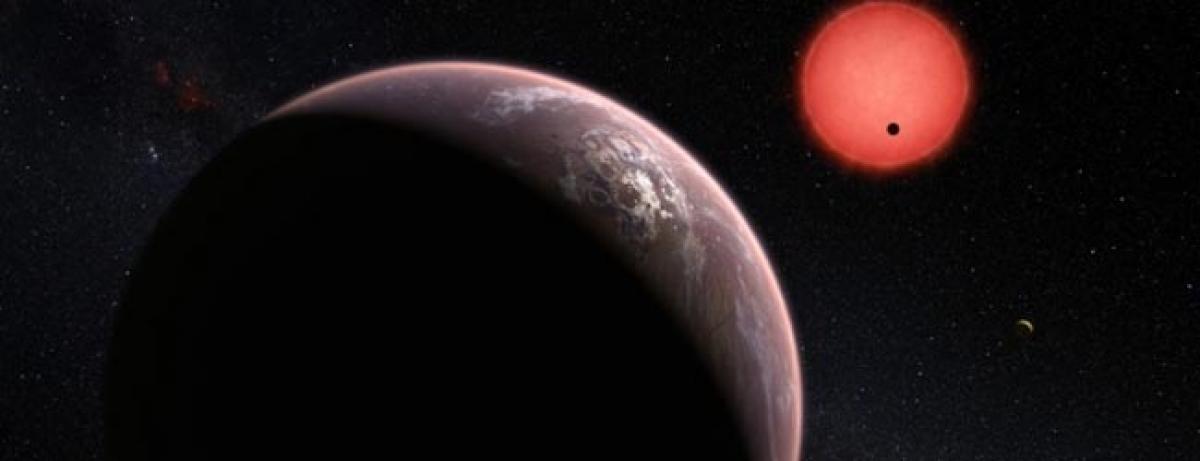Live
- Dhobi Ghat assessed for potential to host sports complex
- SCR bets on LHB train coaches for safety
- SVU felicitates best teachers
- Tata Group to market Araku coffee
- Union Min assures development of infra in tribal mandals
- KTR, Harish will turn political rivals soon: TPCC Chief
- Annabhishekam held at Sri Kapileswaa Swamy temple
- Festive glow of Karthika Pournami: Women celebrate Karthika Pournami with grandeur
- Japanese Princess Yuriko dies at 101
- Israeli strikes kill 12 rescuers
Just In

Scientists from the University of Cambridge announced Monday evening that they had discovered three earth-sized planets orbiting a dim
London: Scientists from the University of Cambridge announced Monday evening that they had discovered three earth-sized planets orbiting a dim and cool star 40 light years from Earth which could be the best place to start searching for extra-terrestrial life.
"The discovery of a planetary system around such a small star opens up a brand new avenue for research," said Professor Didier Queloz from the University of Cambridge's Cavendish Laboratory.
Scientists used a telescope at the European Southern Observatory's (ESO) La Silla Observatory in Chile, to view the star known as TRAPPIST-1, which is in the Aquarius constellation, Xinhua reported.
They found that this dim and cool star faded slightly at regular intervals, indicating that several objects were transiting or passing between the star and the Earth. Detailed analysis showed that there were three planets of a similar size with the Earth.
TRAPPIST-1 is an ultra-cool dwarf star and as such is much cooler and redder than the Sun and is barely larger than Jupiter.
Such stars are very common in the Milky Way and very long-lived but this is the first time that planets have been found around one of them.
Despite being just 40 light years from the Earth, this star is too dim and too red to be seen with the naked eye or even with a large amateur telescope.
"Before this discovery it was not at all clear whether such a small star could host an Earth-sized planet. Nobody had seriously studied it, but now that's likely to change," said Professor Queloz.
"Systems around these tiny stars are the only places where we can detect life on an Earth-sized exoplanet with our current technology," said Michael Gillon, from the University of Liege in Belgium, who co-authored a paper on the new discovery with Professor Queloz.
"So if we want to find life elsewhere in the universe, this is where we should start to look," he added.

© 2024 Hyderabad Media House Limited/The Hans India. All rights reserved. Powered by hocalwire.com







